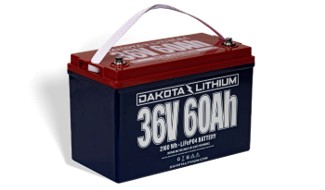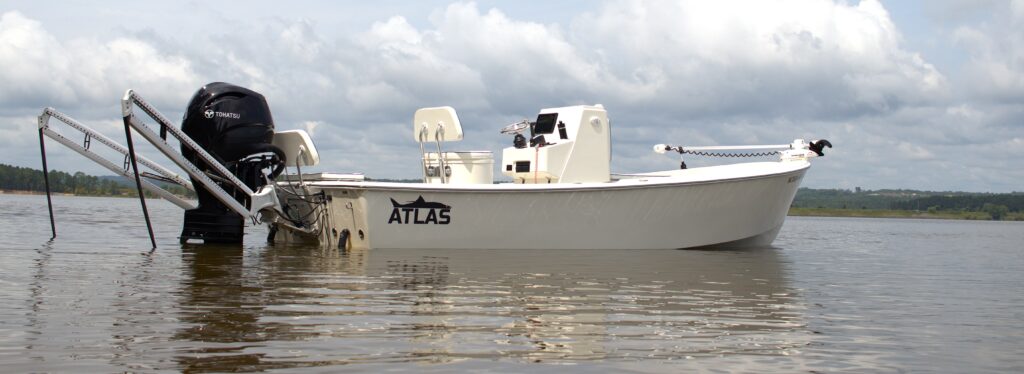Dakota Lithium Batteries
One of the decisions we made when rigging our 2024 Atlas Boatworks 23F demo boat was choosing the right batteries.
Lithium batteries are a popular choice for trolling motors on bay boats, so we knew we had to consider them.
In this post, we break down the advantages and disadvantages of lithium batteries. We also share our experience using the Dakota 36V 60Ah battery for our trolling motor.


Advantages of Lithium
Lithium batteries offer several advantages over traditional deep-cycle lead-acid batteries. One major benefit is their weight savings—lithium batteries can be up to 70% lighter than lead-acid models. This reduction improves boat performance, including speed, fuel efficiency, and handling, which is especially important in shallow water.
Additionally, lithium batteries provide consistent power output throughout their discharge cycle. Your trolling motor runs at full strength until the battery is nearly depleted. They also last significantly longer, often 10 years or more with proper maintenance. In contrast, lead-acid batteries may need replacing every few years.
Faster charging times and the ability to handle deeper discharge cycles without damage make them even more appealing to serious anglers and boaters.
Disadvantages of Lithium
Lithium batteries aren’t without drawbacks. The most obvious downside is the cost—lithium options are much more expensive than traditional deep-cycle batteries, sometimes costing three to four times as much.
While their longevity can offset the expense, the upfront investment may be a barrier for some boaters.
Additionally, lithium batteries require a compatible charger and may not integrate with all boat systems without modifications.
Cold weather can also be an issue. Some lithium batteries have built-in protection that prevents charging at low temperatures.
Lastly, while lithium batteries require little maintenance, monitoring the built-in battery management system (BMS) is essential to prevent overcharging or overheating.
Todays modern GPS-enabled trolling motors can demand a lot of power from the battery to keep the boat in place in a strong wind or current. Here the trolling motor on an Atlas Boatworks 23F bay boat is fighting a strong incoming tide and gusty breeze while keeping the boat in casting range of a dock.
Conclusion
We chose the Dakota Lithium 36V 60Ah battery for our 2024 Atlas Boatworks 23F demo boat to power the Minn Kota trolling motor. Weight and space savings made it a better option than using three deep-cycle batteries.
Two major concerns influenced our decision. The first was choosing the right amp hours (Ah), which measure how much energy a battery stores. A higher number means longer power for your equipment. After speaking with other Atlas Boatworks 23F bay boat owners who had switched to lithium, we decided that 60Ah would be enough. We haven’t been disappointed. The battery powers our trolling motor for three full days of fishing before needing a charge—more than we expected.
The other concern was charging. Since the lithium battery runs at 36V while the house and starting batteries run at 12V, we couldn’t use the same charger. We kept the 12V onboard charger for the house and starting batteries and used the external charger that came with the Dakota battery for the trolling motor. So far, this setup has worked well. As lithium batteries become more popular, onboard chargers capable of handling multiple voltages will likely become available.
Overall, we’re extremely happy with our decision and the Dakota Lithium battery’s performance.